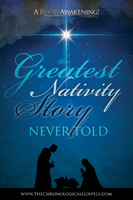What Is Sukkot?
Sukkot (pronounced sue-COAT) is also called the Feast of Tabernacles, or Feast of Booths. Sukkot is one of the three pilgrimage feasts, or feasts for which we are commanded to “go up” to Jerusalem. Today there is no Temple to go to in Jerusalem, but we still celebrate this feast because it is a rehearsal of events that have already occurred and some yet to come. The first day of Sukkot is a High Sabbath and the day immediately following the seven-day feast (Shemini Atzeret) is also a High Sabbath (special Sabbaths other than the weekly Sabbath, Saturday) of no work.
During the feast of Sukkot we remember when the Almighty led the Israelites out of Egypt, and they lived in shelters in the wilderness for 40 years. During this time, the Almighty also dwelt in a sukkah (sue-KAH), the singular form of the Hebrew word sukkot, among the people (i.e. in the “tabernacle”).
For Sukkot, each family is commanded to build a temporary shelter a sukkah and dwell in it for the length of the 8-day feast. Some people set up a tent to dwell in during this time, while others build more elaborate, yet temporary structures with PVC pipe, bamboo, or wooden boards. It can be as simple as a square or rectangle top and four legs. The walls of the sukkah are usually some kind of fabric.
Most people eat their meals in the sukkah and some even camp out in it each night. The sukkah is intended to remind us of our need for the Almighty’s provision and of the fact that our life on Earth is temporary, like the sukkah itself.
What Does It Mean?
Physically speaking, the Feast of Sukkot commemorates when, over 2,000 years ago on the first day of Sukkot (a High Sabbath), the Messiah was born. He was the very Word of the Almighty made flesh, and literally “dwelt” or “tabernacled” with us.
In a spiritual sense, the Feast of Sukkot is all about finally dwelling with the Almighty after the end times. When we are gathered to the Messiah, there will be a great feast (during the feast of Sukkot, of course). The Bible likens it to a wedding feast and calls it the Marriage Supper of the Lamb (Rev. 19:6) . The groom is Messiah and we are like a bride that has waited for him.
Then, on the Last Great Day, the eighth day of the feast, Yeshua returns to the earth on a white horse to rule with his people for 1,000 years. In the final fulfillment of this feast, there will be a new Heaven and new Earth, and we will finally dwell with the Almighty forever — the eternal Sukkot!
Has Sukkot Been Fulfilled?
Sukkot Dates
Sukkot is from sundown (the 1st day is a High Holy Day) through sundown, immediately followed by Sh’mini Atzeret.
Get your free download of The Greatest Nativity Story Never Told – an excerpt from Michael Rood’s acclaimed book, The Chronological Gospels.
Newsletter
Learn More About Sukkot
Dive deeper with our DVDs, books, and downloadable audio from our online store.
